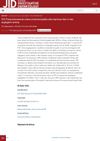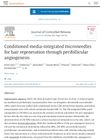signaling protein that, when suppressed, may grow hair by reducing inflammation and stem cell loss
plant and natural oil with antimicrobial and some anti-androgenic effects
antifungal with some anti-androgenic benefits, often used as a shampoo
hormone commonly taken for sleep aid has some topical benefits for hair

